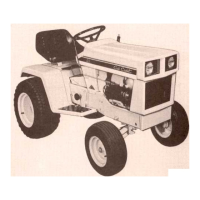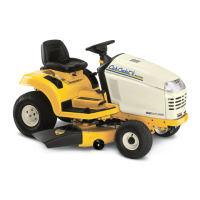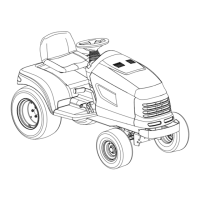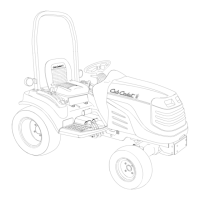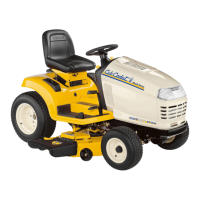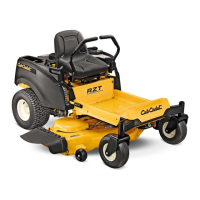CVT Drive and brake system
59
• When the brakes are released, it should be pos-
sible to wiggle the brake rotor within the yoke.
• If the rotor is tight in the caliper, check the yoke
adjustment.
• If the rotor is tight in the yoke, check the opera-
tion of the yoke to confirm that it is not stuck.
• When the brake pedal is released, the brake arm
on the yoke should fall completely back against
the axle housing.
4. Check the drive belts. See Figure 6.4.
• In normal use, drive belts typically last for years
without problems.
• If the belt fails prematurely, identify and correct
the cause of the belt failure before returning the
tractor to service.
4a. Look-up the part number for the belts, and
confirm that the correct OEM belts are on
the tractor.
4b. Check the belt routing.
4c. Check the brake/clutch linkage and belt
tensioning pulleys.
4d. Check for foreign objects jammed against
the belt.
4e. Check for missing or out-of-place belt
guides. See the belt replacement section
of this chapter.
4f. Check the engine crankshaft and transaxle
input pulleys; Confirm that the sheaves are
not spread-out, causing a loose belt fit.
Figure 6.4
5. Check the drive control linkage. See Figure 6.5.
5a. The travel limit pin fits into the curved slot
in the drive pedal latch plate. The pedal
bracket should have enough travel for the
pin to hit both ends of the curved slot when
the pedal is moved through the full range
of its travel.
5b. Some relatively simple things that may go
wrong with the pedal linkage:
• The drive pedal itself being loose on the bracket.
• Worn plastic bushings between the drive pedal
bracket and the brake cross-shaft.
See Figure 6.6.
5c. Check the adjustment of the front ten-
sioner pulley control rod.
Figure 6.5
Travel limit pin
Figure 6.6
Plastic bushing
Pedal mounting
bracket
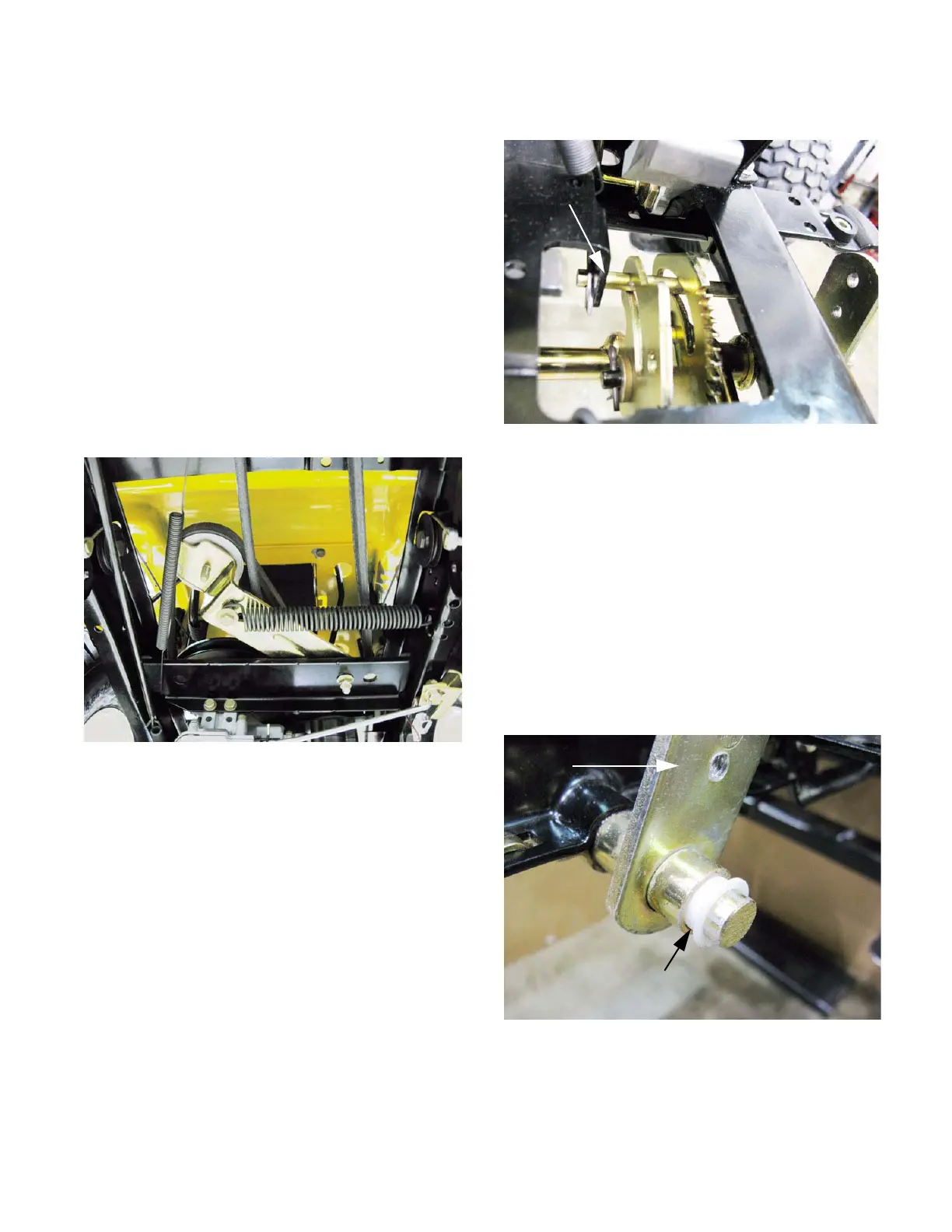